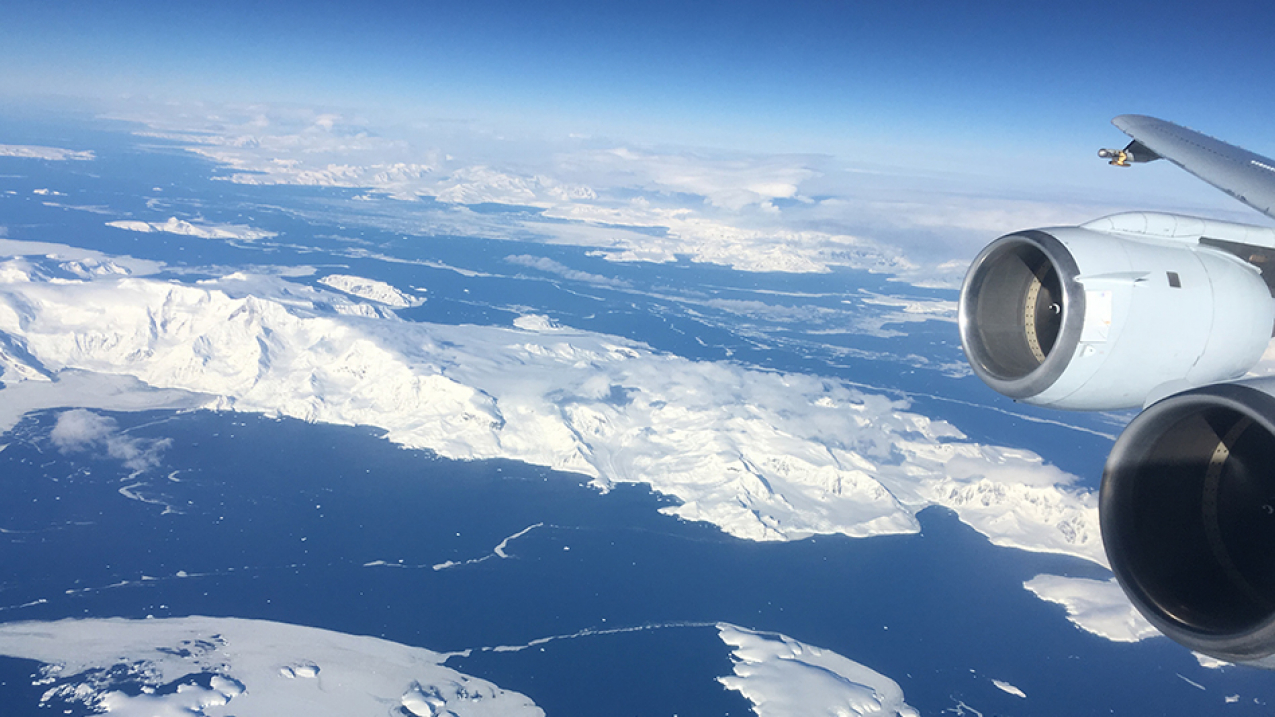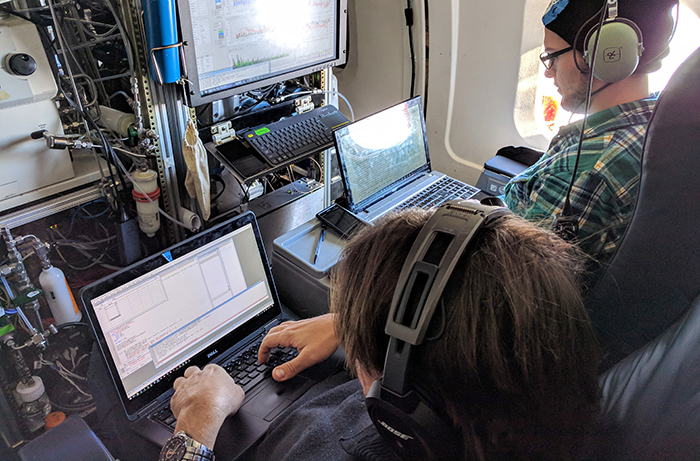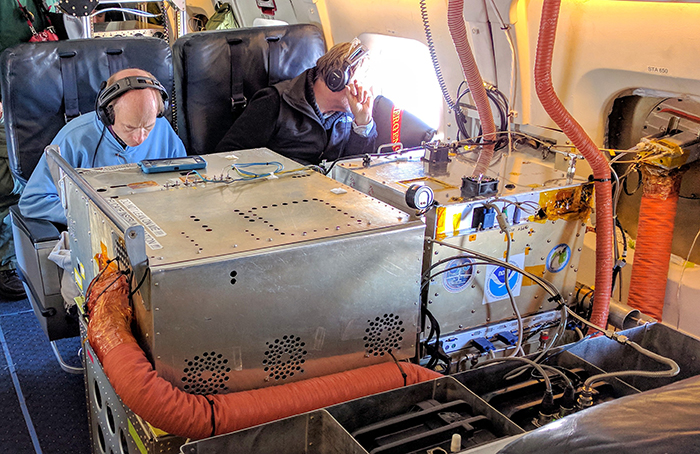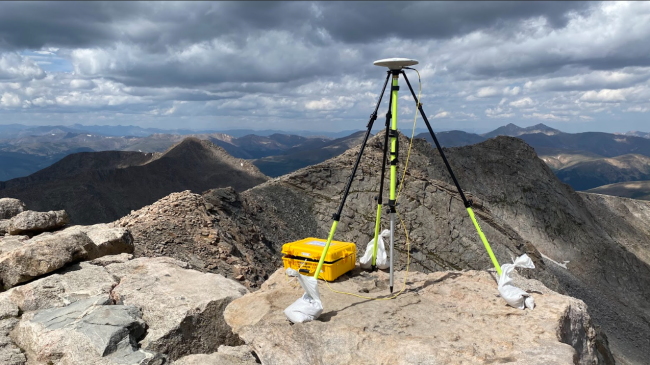Thirty years after NASA and NOAA launched a groundbreaking airborne campaign to study the Antarctic ozone hole, the two federal science agencies have once again joined forces over the world’s highest, driest and coldest continent to sniff out the secrets of the atmosphere.

The NASA DC-8 approaches Antarctica on Oct. 14 as part of joint NASA/NOAA mission to study short-lived greenhouse gases over the remote ocean. (Image credit: Chelsea Thompson/CIRES)
On Oct. 14, NASA’s heavily instrumented DC-8 flew over Antarctica as part of the AtmosphericTomography Mission or ATom, an unprecedented effort to sample the remote atmosphere to understand the distribution of man-made pollutants and short-lived greenhouse gases.
“The atmospheric measurements that ATom takes are unavailable by any other means,” said NOAA scientist Tom Ryerson. “ATom is designed to tell us the current state of 80 percent of Earth’s atmosphere. It will give us an important and unique reality check on the computer models we use to predict the future.”
The science of ‘then’ informs the science of ‘now’
In 1987, it was another planetary puzzle that brought NASA and NOAA together. The ozone hole had just been discovered, and the joint mission to Antarctica helped resolve questions about which of several competing theories were responsible for the seasonal depletion of stratospheric ozone.
Results from that Antarctic mission helped galvanize international efforts to control the ozone-depleting chlorine- and bromine-containing chemicals that scientists determined were the primary cause of the problem. Since its adoption in September 1987, the Montreal Protocol has significantly reduced emissions of ozone-depleting chemicals from the United States.
Ozone is one of over 200 gases and atmospheric particles being measured by the ATom team aboard the DC-8. These include the primary greenhouse gases (like carbon dioxide and methane), ozone-depleting man-made pollutants, and other trace gases and particles.
Understanding these short-lived climate-influencing agents would help policymakers develop strategies to control emissions and thus buy time to address long-lived emissions of carbon dioxide, said Ryerson, the mission’s science team lead.


A high-flying laboratory that collects a world of data
To gather data for ATom, NASA’s DC-8 – the world’s largest chemically instrumented research aircraft – flies a continuous up-and-down pattern from 500 feet above the wave tops to over 40,000 feet in altitude, in a dozen 10-hour flights over the course of six weeks.
NOAA scientist David Fahey remembers a time when data collection wasn’t always this comprehensive or technologically complex. He was one of the principal investigators on the 1987 Antarctic ozone mission.
“These were challenging conditions,” said Fahey, currently director of NOAA’s Chemical Sciences Division. “This was before internet communications or cell phones. Now we’re working with much better instruments and modeling tools, but the goal is the same: To discover the essential details about how the atmosphere works in the vast remote regions of the planet.”
Media contact


